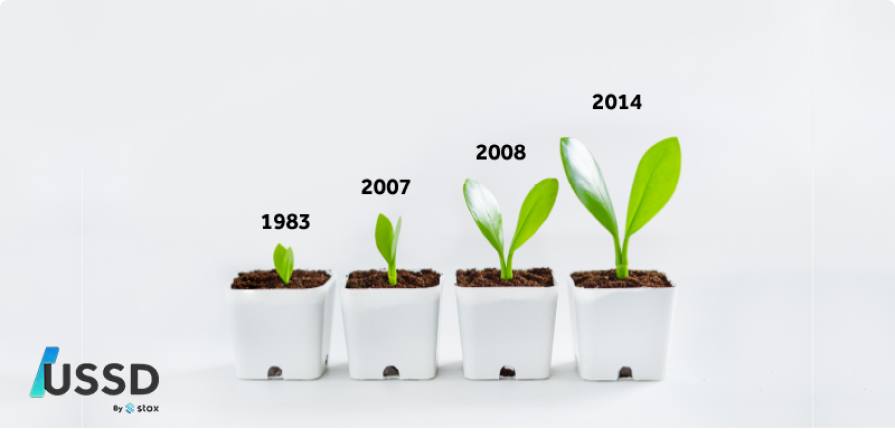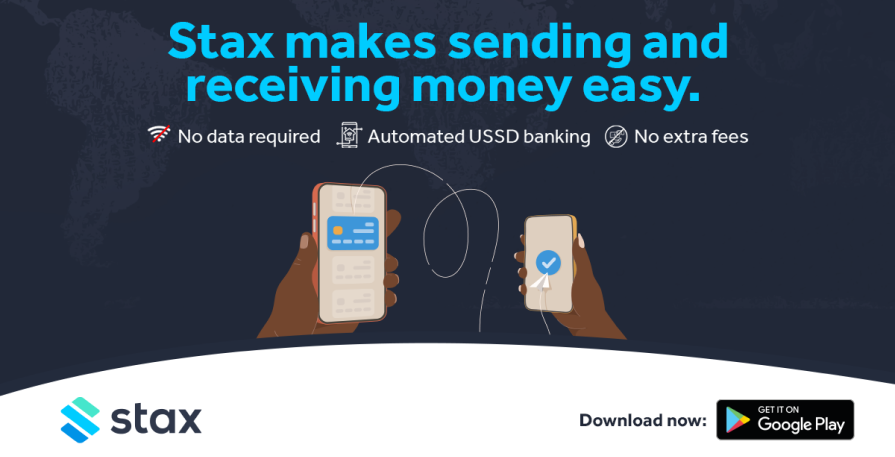minute read
23/06/2021
Product
If you asked a random person in the city of Lagos, Accra, or Nairobi what USSD was, you’d have as much chance of getting a correct answer as if you’d asked them whether they had seen snow before.
Despite being widespread in its use, Unstructured Supplementary Service Data (USSD) is not a recognisable term for most Africans. We know its different iterations e.g. telco recharge codes, bank codes, mobile money codes, etc. But the history and meaning of the term itself are somewhat of a foreign concept to most of us. And it’s not for a strange reason.
Although USSD has found a home in Africa, it is not an African invention—far from it.
The creation of USSD
To understand the origins of USSD, we have to go back to 1983 Europe, just as the mobile technology age was about to take off.
The year is 1983 and the European Union (EU) is debating what digital cellular voice communication standard to adopt for its member nations.

After much debate and 4 years of research, the Union settles on a standard called the GSM “Global System for Mobile Communications” in 1987. A year after, in 1988, the European Commission, the trade body that handles the business of the EU, created the European Telecommunications Standards Institute (ETSI). The ETSI’s job was to harmonize and standardize information and communications technology across the EU.
It was the ETSI that would go on to create the basis of USSD technology in March 1997. A couple of engineers from the Institute published a document titled GSM 02.90. The document covered a protocol for technical communications between mobile network operators’ computers and their users’ mobile devices.
Over the next few mobile phones began to take off, engineers realised that there would be a need for a protocol to facilitate easy communication between a user’s device and the network operator’s computers. This need resulted in the creation of the USSD protocol, developed from the recommendations of GSM 02.90.
Initially, the USSD protocol was only used for querying the mobile network operator’s computers for things like buying airtime, checking balance, etc.
USSD’s entrance into Africa
Africa’s colonial ties with Europe meant that when mobile technology would finally penetrate the continent in the early 2000s, the GSM was the standard adopted by most countries. This was despite the presence of competing technologies like the CDMA, which was used by the USA and Russia.
Other regions where mobile technology had penetrated earlier relied on post-paid plans to keep users connected, which meant users didn’t have to query the operators’ networks too often.
However, the lack of buying power in Africa meant that telcos had to innovate with sachetized prepaid plans to keep people connected. This also meant that African users had to query their operators’ networks more often than their counterparts in other regions. Telcos resorted to USSD so that people could recharge their phones and perform other functions.
That move heralded the popularity of USSD codes in Africa with codes like 556# for MTN Nigeria,456# for Safaricom, and *100# for Vodacom becoming synonymous with mobile phone use.

USSD goes mainstream
In 2007, Safaricom launched M-PESA—a mobile phone-based money transfer, financing, and micro-financing service. Through a clever workaround, Safaricom allowed people to transfer money into their M-PESA wallets and withdraw it from a network of agents including airtime resellers and retail outlets acting as banking agents. This allowed people in underserved areas to access basic financial services at a rate they had not been able to before.
The internet had very minuscule penetration in Africa at the time, so Safaricom had to figure out a way to help users perform transactions. In Kenya, the company went with Sim Tool Kits (STKs), which are telco-owned apps that are auto-installed on every sim card. These apps are light and can easily be installed on feature phones. STKs proved to be a major hit with the Kenyan market with M-PESA users creating 2 million accounts in only the first year.
The resounding success of M-PESA in Kenya led to its launch in neighboring Tanzania in 2008 by Vodacom—an affiliate company of Safaricom. In Tanzania, Vodacom went with USSD instead of STKs. That also proved to be a resounding success and the herald of USSD’s success as the main tool for accessing digital financial services in Africa.
M-PESA’s success was copied, tried, and tested in different parts of Africa with differing levels of success. However, the utility of USSD to financial transactions only grew stronger even in places where mobile money did not succeed e.g. Nigeria, South Africa, etc.
In Nigeria, for instance, iterations of M-PESA’s mobile money were tried out, however, regulations and market peculiarities meant they never took off. Banks, however, succeeded in powering mobile banking through USSD codes with Fidelity Bank and GTBank pioneering the way in 2014.
While USSD did not begin as an original African invention, it has become synonymous with the continent. People across Africa rely on the technology to pay bills, perform banking transactions, recharge their phones, access insurance, and perform countless other kinds of transactions.
SULOLA BOLARINWA
Subscribe to our newsletter
SubscribeSubscribe to our newsletter
Subscribe